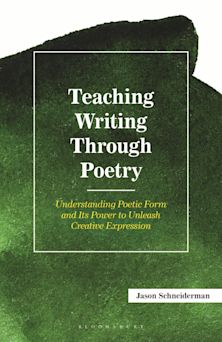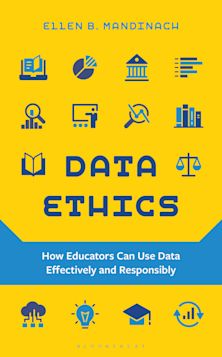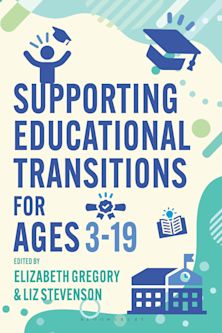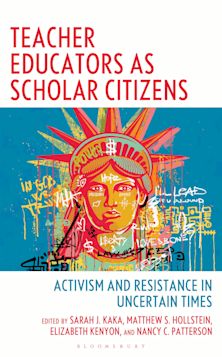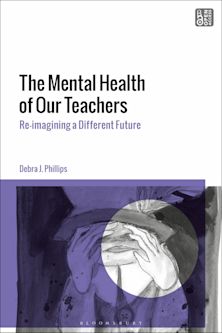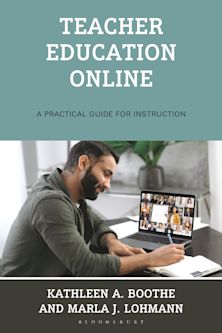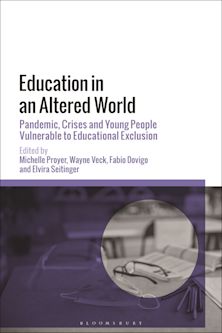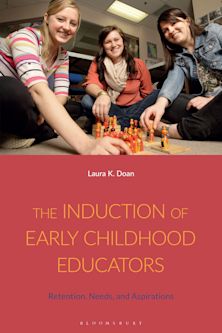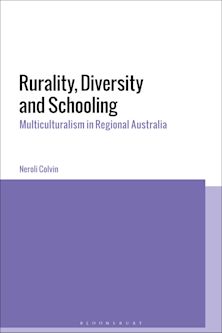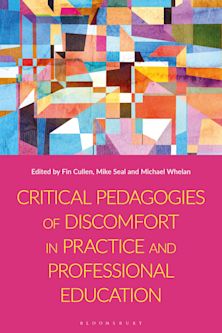- Home
- ACADEMIC
- Education
- Teacher Education
- Studio-Based Approaches for Multimodal Projects
Studio-Based Approaches for Multimodal Projects
Models to Promote Engaged Student Learning
Russell Carpenter (Anthology Editor) , Hannah Dean (Contributor) , Veronica Diaz (Contributor) , Kevin Dvorak (Contributor) , Jennifer Fairchild (Contributor) , Abby Gardner (Contributor) , Lucas Green (Contributor) , Jordan Kaiser (Contributor) , Jacqueline Lytle (Contributor) , Matthew Kim (Contributor) , Courtnie Morin (Contributor) , Clint Stivers (Contributor)
Studio-Based Approaches for Multimodal Projects
Models to Promote Engaged Student Learning
Russell Carpenter (Anthology Editor) , Hannah Dean (Contributor) , Veronica Diaz (Contributor) , Kevin Dvorak (Contributor) , Jennifer Fairchild (Contributor) , Abby Gardner (Contributor) , Lucas Green (Contributor) , Jordan Kaiser (Contributor) , Jacqueline Lytle (Contributor) , Matthew Kim (Contributor) , Courtnie Morin (Contributor) , Clint Stivers (Contributor)
You must sign in to add this item to your wishlist. Please sign in or create an account
Description
Studio-Based Approaches for Multimodal Projects examines a cross-section of strategies for studio approaches and models that enable process-oriented multimodal projects and promote student learning. This collection features seven chapters authored or coauthored by leaders and innovators in studio-based approaches. These scholars explore studio models and provide vivid examples of ways in which they are realized as students pursue, design, and create multimodal projects, including ePortfolios, research posters, websites, and other engaging artifacts that integrate oral, written, visual, and electronic communication.
Studio-based approaches enhance creativity, interaction, and learning among students. The models designed and employed to support these activities would benefit from a more focused look. This collection assembles perspectives from scholar-practitioners who know and use studio-based models. They are experts in this area and have helped to shape current understandings of approaches that work well to enhance learning through multimodal projects--those that integrate oral, visual, written, or electronic modes of communication.
Table of Contents
Chapter 1: An Introduction to Studio-Based Approaches, Russell Carpenter and Abby Gardner
Chapter 2: Inquire, Create, Communicate: Reframing Undergraduate Research Using Studio-Based Pedagogy, Courtnie Morin
Chapter 3: Structuring ePortfolio Learning for Students through a Studio-Based Approach, Clint Stivers, Lucas Green, Russell Carpenter, and Jennifer Fairchild
Chapter 4: Performing the Writing Studio in the Inclusive Classroom: Asserting a Multimodal Language with which to Challenge the Learning Disabilities Label at School, Matthew Kim
Chapter 5: Designing the Teacher: Utilizing ‘Design Thinking’ as Studio-Based Professional Development, Jordan Kaiser
Chapter 6: Student Engagement in Studio-Based Models, Hannah Dean, Veronica Diaz, and Jacqueline Lytle
Chapter 7: Reflecting on Applications of Studio-Based Models, Kevin Dvorak
About the authors
Product details
| Published | May 10 2019 |
|---|---|
| Format | Ebook (Epub & Mobi) |
| Edition | 1st |
| Extent | 134 |
| ISBN | 9781498586474 |
| Imprint | Lexington Books |
| Illustrations | 3 BW Illustrations, 2 BW Photos, 7 Tables |
| Publisher | Bloomsbury Publishing |
About the contributors
Reviews
-
This book is primarily for scholars of writing, communication, and multimodality interested in designing or enhancing their learning environments to incorporate approaches for all learners. As editor, Rusty Carpenter once again significantly shapes our understanding of studio pedagogy. In assembling an amazingly varied group of contributing authors, who are practitioners themselves, Carpenter invites readers to envision studio pedagogy working at their institutions. The vastly different perspectives to studio pedagogy presented stir excitement and provide hope for students, facilitators, peer educators, administrators, and faculty seeking better multimodal learning-by-doing experiences. Anyone involved in actively engaging student-composers as they seek to develop savvy multimodal artifacts will treasure this book.
Kimberly M. Cuny, University of North Carolina at Greensboro











